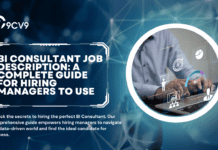Key Takeaways
- CTRM/ETRM software streamlines commodity and energy trading by automating transactions, risk management, and regulatory compliance.
- It enhances operational efficiency with real-time data insights, predictive analytics, and integrated financial tracking.
- Businesses using CTRM/ETRM solutions can mitigate market volatility, reduce errors, and optimize profitability in competitive trading environments.
Commodity and energy markets are among the most complex and volatile sectors in the global economy.
The prices of crude oil, natural gas, metals, agricultural products, and other commodities fluctuate due to a variety of factors, including geopolitical tensions, supply chain disruptions, regulatory changes, and market speculation.
To navigate this ever-changing landscape, businesses involved in commodity and energy trading require sophisticated tools that help them manage transactions, mitigate risks, and optimize their operations.
This is where Commodity Trading, Transaction, and Risk Management (CTRM) software and Energy Trading, Transaction, and Risk Management (ETRM) software come into play.

CTRM and ETRM software solutions are specialized platforms designed to streamline and enhance the trading, logistics, and risk management aspects of commodity and energy markets. These systems provide traders, risk managers, and financial analysts with real-time market insights, automated trade execution, regulatory compliance support, and advanced risk assessment capabilities. As global trade continues to evolve and become more digitized, the adoption of CTRM/ETRM software has become essential for companies seeking to stay competitive, minimize exposure to financial risks, and maximize profitability.
Why is CTRM/ETRM Software Important?
Commodity and energy trading are not as straightforward as traditional financial markets. Unlike stocks or bonds, commodities are physical assets that require extensive logistical planning, contract management, and hedging strategies to ensure smooth transactions. Additionally, market participants must constantly monitor geopolitical events, weather patterns, and supply chain disruptions to make informed trading decisions.
CTRM and ETRM software address these challenges by integrating multiple business functions into a single platform. These solutions provide real-time trade execution, portfolio management, contract tracking, regulatory compliance monitoring, and risk assessment—all in one centralized system. This allows companies to improve efficiency, reduce operational errors, and make data-driven decisions based on predictive analytics.
Furthermore, risk management is a critical component of commodity and energy trading. Price fluctuations, counterparty risks, credit exposures, and market volatility can significantly impact profitability. CTRM/ETRM software is equipped with advanced analytics and risk mitigation tools that help businesses evaluate potential threats, execute hedging strategies, and comply with global financial regulations.
The Evolution of CTRM/ETRM Software
The need for robust risk management solutions in commodity and energy trading has grown significantly over the years. Traditionally, traders relied on manual spreadsheets, phone-based transactions, and basic enterprise resource planning (ERP) systems to track deals and monitor market changes. However, as commodity trading has become more sophisticated and globalized, these traditional methods have proven to be inefficient and prone to errors.
The emergence of CTRM/ETRM software revolutionized the industry by providing automated solutions that integrate trading, logistics, risk management, and compliance into one seamless system. Modern CTRM/ETRM platforms leverage artificial intelligence (AI), machine learning, cloud computing, and blockchain technology to enhance accuracy, security, and transparency in commodity transactions. As a result, businesses can now process large volumes of data in real time, execute trades more efficiently, and develop proactive risk management strategies.
Key Industries That Rely on CTRM/ETRM Software
CTRM/ETRM solutions are widely used across various industries that deal with physical and financial commodity trading. Some of the key sectors that depend on these platforms include:
- Oil and Gas – Managing crude oil, natural gas, and refined petroleum products while mitigating price volatility and regulatory risks.
- Metals and Mining – Tracking the trading of precious metals, industrial metals, and minerals with optimized inventory management.
- Agriculture – Ensuring seamless trade and supply chain management for crops, livestock, and other agricultural commodities.
- Electricity and Renewable Energy – Supporting energy producers, utility companies, and renewable energy traders in executing and managing energy contracts.
- Financial Institutions – Banks, hedge funds, and investment firms utilizing CTRM/ETRM software for commodity derivatives trading and risk analysis.
What to Expect in This Guide
This comprehensive guide will explore the fundamental aspects of CTRM/ETRM software, including its core features, how it works, and the benefits it offers to businesses. We will delve into the key functionalities of these platforms, such as trade execution, portfolio management, compliance monitoring, and risk assessment. Additionally, we will discuss the challenges involved in implementing CTRM/ETRM software and highlight some of the leading solutions in the market.
Moreover, as technology continues to shape the future of commodity and energy trading, we will explore emerging trends such as AI-driven analytics, blockchain-based smart contracts, and cloud-based CTRM/ETRM platformsthat are redefining industry standards. Whether you are a commodity trader, risk manager, or financial analyst, understanding the role of CTRM/ETRM software is crucial in navigating the fast-paced and high-risk environment of global commodity markets.
By the end of this guide, you will have a clear understanding of how CTRM/ETRM software works, why it is a vital tool in commodity and energy trading, and how businesses can leverage its features to optimize operations, mitigate risks, and enhance profitability.
Before we venture further into this article, we would like to share who we are and what we do.
About 9cv9
9cv9 is a business tech startup based in Singapore and Asia, with a strong presence all over the world.
With over nine years of startup and business experience, and being highly involved in connecting with thousands of companies and startups, the 9cv9 team has listed some important learning points in this overview of What is Commodity/Energy Trading, Transaction, and Risk Management (CTRM/ETRM) Software and How It Works.
If your company needs recruitment and headhunting services to hire top-quality employees, you can use 9cv9 headhunting and recruitment services to hire top talents and candidates. Find out more here, or send over an email to [email protected].
Or just post 1 free job posting here at 9cv9 Hiring Portal in under 10 minutes.
What is Commodity/Energy Trading, Transaction, and Risk Management (CTRM/ETRM) Software and How It Works
- Understanding CTRM/ETRM Software
- Core Functions and Features of CTRM/ETRM Software
- How CTRM/ETRM Software Works
- Benefits of Implementing CTRM/ETRM Software
- Challenges and Considerations in Choosing CTRM/ETRM Software
- Future Trends in CTRM/ETRM Software
1. Understanding CTRM/ETRM Software
Commodity Trading, Transaction, and Risk Management (CTRM) and Energy Trading, Transaction, and Risk Management (ETRM) software are specialized digital solutions designed to help businesses navigate the complexities of commodity and energy markets. These systems streamline trading operations, enhance risk management, and optimize decision-making by integrating data-driven insights, automation, and compliance monitoring.
Below is an in-depth exploration of CTRM/ETRM software, its functionalities, and its impact on the commodity and energy sectors.
What is CTRM/ETRM Software?
- CTRM Software
- Stands for Commodity Trading, Transaction, and Risk Management software.
- Primarily used in industries dealing with physical and financial commodities such as metals, agriculture, oil and gas, and chemicals.
- Provides tools for trading, logistics, inventory management, contract tracking, and risk assessment.
- ETRM Software
- Stands for Energy Trading, Transaction, and Risk Management software.
- Specifically designed for the energy sector, including electricity, natural gas, renewable energy, and carbon emissions trading.
- Focuses on power scheduling, generation forecasting, regulatory compliance, and market analytics.
- Key Differences Between CTRM and ETRM
- CTRM encompasses all commodities, while ETRM is energy-focused.
- ETRM includes unique energy-specific functionalities such as power dispatch optimization and load forecasting.
- Many software solutions offer hybrid CTRM/ETRM functionalities to accommodate businesses that trade multiple types of commodities.
Core Functionalities of CTRM/ETRM Software
CTRM/ETRM platforms integrate multiple functions to ensure smooth operations, regulatory compliance, and risk mitigation.
1. Trading and Transaction Management
- Real-time trade execution – Allows traders to execute trades instantly across global markets.
- Automated trade capture – Ensures all transactions are recorded with accurate pricing, timestamps, and trade details.
- Multi-asset support – Enables trading of diverse commodities, including metals, oil, gas, agriculture, and power.
- Order and contract management – Helps businesses track, manage, and reconcile trading agreements efficiently.
- Example: An oil trading firm uses CTRM software to track crude oil purchases, ensuring accurate contract execution and price hedging.
2. Risk Management and Analytics
- Market risk assessment – Identifies price fluctuations and volatility risks for commodities.
- Credit risk analysis – Evaluates counterparties’ financial health to minimize credit exposure.
- Scenario modeling and stress testing – Simulates market changes to determine potential losses and risk-mitigation strategies.
- Regulatory compliance monitoring – Ensures adherence to financial regulations such as Dodd-Frank, MiFID II, and Basel III.
- Example: A power company uses ETRM software to simulate the impact of fluctuating electricity prices on revenue forecasts.
3. Logistics and Supply Chain Optimization
- Inventory and storage tracking – Monitors stock levels, warehouse capacity, and storage costs.
- Shipping and transportation management – Optimizes logistics by tracking shipping routes, delivery schedules, and freight costs.
- Supply chain risk assessment – Identifies bottlenecks, delays, and supplier risks.
- Example: A mining company leverages CTRM software to monitor the movement of raw materials from extraction sites to refineries.
4. Financial and Accounting Integration
- Trade finance and settlement – Manages payments, invoices, and trade settlements efficiently.
- Profit and loss tracking – Provides real-time P&L calculations to assess trading performance.
- Tax and compliance automation – Ensures transactions align with international tax regulations.
- Example: A global agricultural trading firm integrates its CTRM software with enterprise financial systems for automated tax reporting.
5. Regulatory Compliance and Reporting
- Automated compliance checks – Ensures trades adhere to market regulations and risk frameworks.
- Audit trails and reporting tools – Generate detailed trade reports for audits and regulatory submissions.
- Environmental and sustainability compliance – Tracks carbon emissions, renewable energy credits, and green trading initiatives.
- Example: An energy firm trading carbon credits uses ETRM software to generate regulatory compliance reports for environmental authorities.
Types of CTRM/ETRM Software Deployment
Businesses can choose from different deployment models based on operational needs and IT infrastructure.
1. On-Premise CTRM/ETRM Software
- Installed on in-house servers, offering full control over data security.
- Requires dedicated IT teams for maintenance and updates.
- Example: A large oil company with proprietary trading strategies may prefer on-premise deployment for data confidentiality.
2. Cloud-Based CTRM/ETRM Software
- Hosted on cloud servers, offering scalability, remote access, and cost efficiency.
- Provides real-time data synchronization across global trading offices.
- Example: A renewable energy firm uses a cloud-based ETRM system to monitor energy production and trading data across multiple locations.
3. Hybrid CTRM/ETRM Solutions
- Combines on-premise security with cloud-based accessibility.
- Ideal for companies requiring customization while leveraging cloud benefits.
- Example: A multinational commodity trader integrates hybrid software to manage both local and international operations.
Industries Benefiting from CTRM/ETRM Software
CTRM/ETRM software is widely used across various industries to streamline commodity and energy trading operations.
1. Oil and Gas
- Tracks crude oil, refined petroleum, and natural gas trades.
- Manages refinery scheduling, transportation, and inventory.
- Helps energy firms hedge against fluctuating oil prices.
2. Metals and Mining
- Optimizes trading of gold, silver, copper, aluminum, and rare earth metals.
- Enhances mining logistics and inventory forecasting.
- Reduces counterparty risks in large metal trade contracts.
3. Agriculture and Soft Commodities
- Supports trading of wheat, corn, coffee, sugar, and cotton.
- Provides supply chain tracking for farm-to-market transactions.
- Mitigates weather-related risks affecting agricultural yields.
4. Power and Renewable Energy
- Manages electricity trading, renewable energy credits, and carbon emissions.
- Forecasts demand and optimizes energy dispatch schedules.
- Helps power companies comply with sustainability mandates.
5. Financial Institutions and Hedge Funds
- Enables commodity derivatives trading and risk assessment.
- Provides algorithmic trading tools for energy and commodity investments.
- Integrates with financial analytics platforms for real-time market insights.
Emerging Trends in CTRM/ETRM Software
The future of CTRM/ETRM software is being shaped by advanced technologies and evolving market dynamics.
1. AI and Machine Learning in Risk Management
- AI-driven analytics improve risk predictions and trading strategies.
- Machine learning algorithms detect market anomalies and fraud risks.
2. Blockchain for Trade Transparency
- Enables secure and tamper-proof contract management.
- Reduces settlement time for commodity transactions.
3. Cloud and SaaS-Based Solutions
- Enhances scalability, cost savings, and system integration.
- Enables real-time collaboration across global trading teams.
4. ESG (Environmental, Social, Governance) Compliance
- Growing demand for sustainable commodity trading solutions.
- ETRM platforms integrating carbon credit tracking and green energy trading.
Final Thoughts
CTRM/ETRM software has transformed the way commodity and energy traders execute transactions, manage risks, and optimize supply chains. With evolving market dynamics and technological advancements, these platforms continue to play a critical role in ensuring efficiency, transparency, and regulatory compliance in global trading. As businesses embrace digitalization, leveraging advanced CTRM/ETRM solutions will be essential for staying competitive in the fast-paced commodity and energy markets.
2. Core Functions and Features of CTRM/ETRM Software
Commodity Trading, Transaction, and Risk Management (CTRM) and Energy Trading, Transaction, and Risk Management (ETRM) software serve as critical technology solutions for businesses involved in commodity and energy trading. These platforms integrate multiple functionalities, ensuring efficient trade execution, accurate risk assessment, compliance monitoring, and seamless supply chain management.
Below is a comprehensive breakdown of the core functions and features of CTRM/ETRM software, highlighting how they help traders, financial institutions, and enterprises optimize their operations.
1. Trade Execution and Transaction Management
CTRM/ETRM software facilitates real-time trade execution, contract tracking, and transaction management for various commodities and energy assets.
1.1. Real-Time Trade Execution
- Allows instant order placement across multiple commodity and energy markets.
- Supports trading of physical and financial commodities, including metals, oil, natural gas, electricity, and agricultural products.
- Integrates with market exchanges, trading platforms, and brokerage firms.
- Example: A global oil trading firm executes crude oil futures contracts in real time using ETRM software integrated with exchange platforms like ICE and CME.
1.2. Automated Trade Capture
- Captures and logs trade details, pricing, counterparties, and execution times.
- Reduces manual entry errors, ensuring accurate contract records.
- Example: A power company automatically records all electricity trades made through an auction-based energy market.
1.3. Multi-Asset Class Support
- Supports trading in multiple commodity types, including metals, energy, soft commodities, and carbon credits.
- Provides cross-commodity trading capabilities.
- Example: A hedge fund trades both crude oil and agricultural commodities within the same CTRM platform.
1.4. Contract and Order Management
- Manages buy and sell contracts, including term contracts, spot trades, and futures.
- Ensures compliance with agreed-upon terms and conditions.
- Example: An LNG trading firm tracks long-term supply agreements with different suppliers using contract management features.
2. Risk Management and Analytics
Effective risk management is a fundamental function of CTRM/ETRM software, helping traders mitigate market, credit, and operational risks.
2.1. Market Risk Assessment
- Analyzes commodity price fluctuations, volatility, and market trends.
- Provides Value-at-Risk (VaR) calculations to estimate potential losses.
- Example: An energy trading firm uses ETRM software to assess the impact of fluctuating natural gas prices on its revenue forecasts.
2.2. Credit Risk Management
- Evaluates the financial health of counterparties before approving trade agreements.
- Tracks credit limits, payment defaults, and counterparty exposure.
- Example: A commodities hedge fund prevents excessive exposure by setting automated credit limits for each trading partner.
2.3. Scenario Analysis and Stress Testing
- Simulates market crashes, supply chain disruptions, and price shocks.
- Helps businesses develop hedging strategies to mitigate potential losses.
- Example: A mining company tests how a 30% drop in copper prices would affect profitability using scenario analysis tools.
2.4. Automated Compliance Monitoring
- Ensures adherence to regulations like Dodd-Frank, MiFID II, Basel III, and EMIR.
- Flags transactions that require regulatory reporting and risk mitigation.
- Example: A European energy firm uses ETRM software to generate reports for MiFID II compliance.
3. Logistics and Supply Chain Management
CTRM/ETRM software optimizes commodity transportation, warehousing, and supply chain operations.
3.1. Inventory and Storage Tracking
- Monitors commodity stock levels, storage locations, and warehouse capacity.
- Tracks quality and deterioration risks for perishable commodities.
- Example: A grain trading company tracks wheat inventory in multiple silos across different countries.
3.2. Shipping and Transportation Management
- Provides real-time tracking of shipments, logistics planning, and freight cost optimization.
- Integrates with third-party logistics providers (3PLs).
- Example: A coal trading firm uses CTRM software to monitor the movement of shipments from mines to power plants.
3.3. Supply Chain Risk Assessment
- Identifies logistical bottlenecks, supplier risks, and geopolitical disruptions.
- Helps mitigate risks through alternative sourcing and contingency planning.
- Example: An oil refinery assesses the impact of potential shipping delays due to political instability in key oil-exporting regions.
4. Financial Management and Accounting
CTRM/ETRM platforms integrate financial tools for accurate trade settlements, invoicing, and tax compliance.
4.1. Trade Finance and Settlements
- Automates trade finance approval, payment processing, and transaction reconciliation.
- Supports multi-currency transactions and foreign exchange risk management.
- Example: A multinational agricultural firm automates payment settlements for cross-border grain shipments.
4.2. Profit and Loss (P&L) Tracking
- Provides real-time tracking of trading performance, profitability, and margin calculations.
- Enables customized financial reporting for decision-making.
- Example: A metal trading company evaluates profit margins by tracking real-time aluminum and copper price fluctuations.
4.3. Tax and Compliance Automation
- Ensures accurate tax reporting based on jurisdictional requirements.
- Automates VAT, excise tax, and customs duty calculations.
- Example: An oil distributor automates fuel tax calculations for different countries to comply with regional tax laws.
5. Regulatory Compliance and Reporting
CTRM/ETRM software ensures businesses remain compliant with financial and environmental regulations.
5.1. Automated Regulatory Reporting
- Generates audit-ready reports for regulatory bodies.
- Ensures adherence to commodity market regulations and sustainability laws.
- Example: A power trading company generates environmental compliance reports for carbon offset trading.
5.2. Trade Surveillance and Fraud Detection
- Uses AI-driven analytics to detect suspicious trading activities.
- Identifies market manipulation, insider trading, and unusual trade patterns.
- Example: A financial institution detects potential money laundering activities through unusual energy trade transactions.
6. Advanced Technologies in CTRM/ETRM Software
CTRM/ETRM software is evolving with the latest AI-driven innovations, blockchain solutions, and cloud computing.
6.1. Artificial Intelligence and Machine Learning
- Enhances predictive analytics, risk assessment, and trading strategies.
- Uses AI-driven price forecasting for commodities.
- Example: An oil company leverages machine learning algorithms to predict crude oil price movements based on historical data.
6.2. Blockchain for Smart Contracts
- Enables secure, automated, and tamper-proof commodity contracts.
- Reduces settlement times and prevents fraud.
- Example: A renewable energy firm executes smart contracts for trading carbon credits using blockchain-based ETRM software.
6.3. Cloud-Based and SaaS Solutions
- Provides scalability, real-time access, and reduced IT infrastructure costs.
- Enhances collaboration between global trading teams.
- Example: A global energy trader manages transactions from multiple offices using a cloud-based ETRM platform.
Final Thoughts
CTRM/ETRM software plays a vital role in streamlining commodity and energy trading operations by integrating trade execution, risk management, supply chain logistics, financial management, and compliance monitoring into a unified platform. As markets continue to evolve, the adoption of AI, blockchain, and cloud-based technologies is driving further advancements in CTRM/ETRM solutions, making them indispensable for businesses seeking to optimize efficiency and mitigate trading risks.
3. How CTRM/ETRM Software Works
Commodity Trading, Transaction, and Risk Management (CTRM) and Energy Trading, Transaction, and Risk Management (ETRM) software operate as comprehensive platforms that streamline trading, risk assessment, logistics, and compliance for commodities and energy markets. These systems integrate real-time data processing, automation, predictive analytics, and regulatory reporting to enable businesses to optimize their trading and operational workflows efficiently.
This section provides a detailed explanation of how CTRM/ETRM software works, breaking it down into key functional areas with relevant examples.
1. Trade Lifecycle Management
CTRM/ETRM software automates and streamlines the entire trade lifecycle, from order placement to contract settlement.
1.1. Trade Entry and Execution
- Supports physical and financial commodity trading, including spot, futures, options, and swaps.
- Enables traders to execute orders directly from the platform.
- Integrates with market exchanges, brokers, and trading venues for seamless transactions.
- Example: A crude oil trader places a futures contract on ICE (Intercontinental Exchange) through an ETRM platform.
1.2. Trade Capture and Recording
- Automatically logs trade details such as pricing, quantity, counterparty, and execution time.
- Reduces manual errors and ensures trade consistency across the platform.
- Example: A metals trading company captures and records all copper futures contracts executed in the London Metal Exchange (LME).
1.3. Order and Contract Management
- Manages purchase agreements, long-term supply contracts, and sales orders.
- Tracks contractual obligations and ensures compliance with delivery schedules.
- Example: A natural gas supplier tracks multiple delivery contracts with different power plants.
2. Real-Time Market Data Integration
CTRM/ETRM software integrates real-time commodity prices, exchange rates, and market news to help traders make informed decisions.
2.1. Live Market Data Feeds
- Pulls real-time price data from global commodity exchanges (e.g., NYMEX, CME, ICE).
- Displays price trends, historical charts, and volatility indicators.
- Example: An oil trading company monitors Brent crude prices in real time to decide the best entry and exit points for trades.
2.2. News and Event Monitoring
- Tracks geopolitical events, supply chain disruptions, and regulatory changes that affect commodity prices.
- Provides real-time alerts on market-moving news.
- Example: A wheat exporter gets notified about drought conditions affecting wheat production in key agricultural regions.
2.3. AI-Driven Price Forecasting
- Uses machine learning algorithms to predict commodity price movements.
- Analyzes historical trends, demand-supply dynamics, and macroeconomic factors.
- Example: An aluminum manufacturer forecasts metal price changes based on global industrial demand trends.
3. Risk Management and Compliance
Risk assessment is a core function of CTRM/ETRM software, helping businesses mitigate potential financial, operational, and regulatory risks.
3.1. Market Risk Monitoring
- Calculates Value-at-Risk (VaR), scenario analysis, and sensitivity analysis.
- Helps traders hedge against market fluctuations using derivative instruments.
- Example: A coal trader uses CTRM software to assess the risk exposure of coal price volatility on future sales contracts.
3.2. Counterparty and Credit Risk Management
- Assesses the financial health of trading partners before executing contracts.
- Sets credit limits, tracks payment histories, and flags high-risk counterparties.
- Example: An oil refinery prevents excessive credit exposure by limiting the trading volume with high-risk suppliers.
3.3. Automated Regulatory Compliance
- Ensures businesses adhere to financial, environmental, and trade regulations such as:
- MiFID II (Markets in Financial Instruments Directive)
- Dodd-Frank Act
- EMIR (European Market Infrastructure Regulation)
- Generates audit-ready compliance reports.
- Example: A natural gas distributor uses ETRM software to report transaction data to European regulators.
4. Logistics and Supply Chain Optimization
CTRM/ETRM platforms streamline commodity movement, inventory tracking, and transportation logistics.
4.1. Supply Chain Visibility
- Provides a centralized dashboard for tracking inventory levels and stock movements.
- Helps businesses manage storage locations, transportation schedules, and order fulfillment.
- Example: A mining company tracks the movement of iron ore shipments from extraction sites to global ports.
4.2. Freight and Shipping Management
- Monitors vessel, rail, truck, and pipeline shipments in real time.
- Calculates transportation costs, estimated delivery times, and route optimizations.
- Example: A soybean exporter monitors shipment routes and logistics delays for cargo transported to Asia.
4.3. Warehouse and Storage Management
- Tracks stock levels, expiration dates, and quality control measures.
- Ensures proper commodity handling for perishable and hazardous goods.
- Example: A power trading firm ensures coal inventory is stored in compliance with environmental safety standards.
5. Financial Settlements and Accounting
CTRM/ETRM software streamlines financial transactions, invoicing, and cost tracking.
5.1. Trade Finance and Payments
- Automates payment settlements, bank transactions, and financing approvals.
- Manages multi-currency transactions and foreign exchange risks.
- Example: A global agricultural firm processes payments in different currencies for multiple international suppliers.
5.2. Profitability and P&L Tracking
- Monitors profit margins, cost structures, and revenue projections.
- Generates detailed financial reports for stakeholders.
- Example: A metals trading company evaluates profitability based on real-time changes in copper prices.
5.3. Tax Compliance and Reporting
- Calculates and reports commodity taxes, customs duties, and VAT.
- Generates audit reports for tax authorities.
- Example: An oil distributor automatically calculates fuel taxes for different state jurisdictions.
6. Advanced Technology Integration
Modern CTRM/ETRM platforms leverage AI, blockchain, and cloud computing for enhanced efficiency.
6.1. AI and Predictive Analytics
- Uses machine learning to detect market trends and optimize trading strategies.
- Identifies anomalies in trading patterns to prevent fraud and regulatory violations.
- Example: An energy trading firm predicts future electricity demand using AI-driven models.
6.2. Blockchain for Smart Contracts
- Automates contract settlements using blockchain-based smart contracts.
- Enhances transparency and security in commodity trading transactions.
- Example: A renewable energy firm trades carbon credits on a blockchain-based ETRM platform.
6.3. Cloud-Based and SaaS Solutions
- Provides real-time access, scalability, and lower IT infrastructure costs.
- Allows global teams to collaborate seamlessly on a centralized platform.
- Example: A multinational gas trading company uses a cloud-based ETRM platform to manage cross-border transactions.
Final Thoughts
CTRM/ETRM software automates and optimizes every aspect of commodity and energy trading, from trade execution and risk assessment to logistics and compliance management. By leveraging real-time data, AI-driven analytics, and blockchain-based contracts, these platforms help businesses streamline operations, improve decision-making, and mitigate risks in the highly volatile commodities market.
As global commodity trading evolves, CTRM/ETRM software continues to integrate cutting-edge technologies to ensure efficiency, accuracy, and compliance, making it an essential tool for traders, financial institutions, and enterprises worldwide.
4. Benefits of Implementing CTRM/ETRM Software
Commodity Trading, Transaction, and Risk Management (CTRM) and Energy Trading, Transaction, and Risk Management (ETRM) software offer a comprehensive suite of tools that enhance trading efficiency, risk mitigation, financial transparency, and regulatory compliance. These platforms provide businesses with real-time data, automation, analytics, and reporting capabilities, allowing commodity traders and energy firms to make informed decisions, optimize processes, and improve profitability.
Below are the key benefits of implementing CTRM/ETRM software, structured into different functional areas.
1. Enhanced Trade Execution and Operational Efficiency
CTRM/ETRM software streamlines trading operations, automates workflows, and eliminates manual errors, leading to increased efficiency.
1.1. Automated Trade Lifecycle Management
- Manages the entire trade lifecycle, from order creation to settlement.
- Reduces manual data entry errors by automating trade capture, validation, and reporting.
- Example: A crude oil trading company automates trade confirmations and reduces settlement times.
1.2. Seamless Integration with Market Exchanges
- Directly connects with commodity exchanges (CME, ICE, LME, NYMEX) for real-time execution.
- Reduces trade processing time by enabling electronic trade confirmations and straight-through processing (STP).
- Example: A metals trading firm integrates its ETRM platform with the London Metal Exchange to execute aluminum futures contracts efficiently.
1.3. Centralized Data Management
- Stores all trading, financial, and risk-related data in one secure system.
- Eliminates the need for multiple spreadsheets and disparate legacy systems.
- Example: A power company centralizes electricity trading data across multiple regional markets.
2. Improved Risk Management and Hedging Strategies
One of the core benefits of CTRM/ETRM software is its ability to assess, monitor, and mitigate risks associated with price volatility, counterparty credit, and market fluctuations.
2.1. Real-Time Risk Assessment
- Calculates Value-at-Risk (VaR), stress testing, and sensitivity analysis for market exposure.
- Monitors real-time profit and loss (P&L) to prevent excessive losses.
- Example: A natural gas trading company evaluates its portfolio risk exposure based on fluctuating global gas prices.
2.2. Advanced Hedging and Derivatives Management
- Supports futures, options, swaps, and other hedging instruments to mitigate risk.
- Helps traders make strategic hedging decisions based on real-time risk analytics.
- Example: A wheat exporter hedges against adverse price movements by using options contracts.
2.3. Counterparty Credit Risk Mitigation
- Assesses the creditworthiness of trading partners before executing contracts.
- Sets credit limits and real-time alerts for high-risk counterparties.
- Example: An oil refining company reduces exposure to default risk by limiting trade volumes with financially unstable suppliers.
3. Regulatory Compliance and Transparency
CTRM/ETRM software ensures that businesses adhere to global commodity trading regulations and provides audit-ready documentation.
3.1. Automated Regulatory Reporting
- Generates compliance reports for MiFID II, Dodd-Frank, EMIR, REMIT, and other regulatory frameworks.
- Submits reports directly to regulators, reducing the risk of non-compliance penalties.
- Example: A European power trading firm automates transaction reporting to comply with REMIT (Regulation on Wholesale Energy Market Integrity and Transparency).
3.2. Audit-Ready Documentation and Record Keeping
- Maintains detailed audit trails of trade transactions, contract changes, and financial statements.
- Enhances transparency and prevents fraud or unauthorized trade modifications.
- Example: A renewable energy trading company generates instant audit logs for internal and external regulatory reviews.
3.3. Automated Tax and Customs Compliance
- Calculates and applies commodity-specific taxes, duties, and tariffs.
- Ensures accurate reporting of import/export duties based on trade jurisdictions.
- Example: A global oil and gas company automates fuel tax calculations for cross-border energy transactions.
4. Optimized Supply Chain and Logistics Management
CTRM/ETRM software helps businesses manage physical commodity movements, inventory, and transportation logistics effectively.
4.1. Real-Time Inventory Tracking
- Provides live tracking of storage levels, warehouse capacity, and shipment locations.
- Prevents inventory shortages and overstocking by automating restocking alerts.
- Example: A mining company monitors iron ore stock levels across multiple shipping hubs.
4.2. Freight and Transportation Management
- Optimizes shipping routes, vessel tracking, and transportation scheduling.
- Reduces logistics costs by selecting the most cost-effective freight options.
- Example: A liquefied natural gas (LNG) trader tracks ship deliveries from production terminals to global buyers.
4.3. Quality Control and Compliance
- Ensures commodities meet industry standards, safety requirements, and certification protocols.
- Prevents shipment losses due to poor handling or substandard quality control.
- Example: A coffee exporter ensures compliance with organic certification standards before shipping beans internationally.
5. Increased Profitability and Cost Reduction
CTRM/ETRM platforms enhance profitability by reducing operational costs, optimizing trades, and increasing financial efficiency.
5.1. Cost Reduction Through Process Automation
- Minimizes labor-intensive manual tasks in trade processing, reporting, and compliance.
- Lowers operational costs by replacing outdated legacy systems.
- Example: A commodity brokerage firm reduces administrative costs by automating contract settlements.
5.2. Enhanced Price Optimization Strategies
- Uses AI and predictive analytics to identify the best trading opportunities.
- Improves pricing strategies based on historical trends and market conditions.
- Example: A grain trading company maximizes profits by selling at peak seasonal prices using AI-driven price predictions.
5.3. Multi-Currency and Multi-Region Financial Management
- Supports international trading with automated foreign exchange (Forex) conversions.
- Manages cross-border tax calculations and multi-currency settlements.
- Example: A global crude oil trader manages payments in USD, EUR, and GBP with real-time Forex adjustments.
6. Advanced AI, Blockchain, and Cloud Integration
Modern CTRM/ETRM platforms incorporate cutting-edge technologies to enhance functionality and security.
6.1. AI and Machine Learning for Predictive Analytics
- Uses machine learning models to forecast price fluctuations and market trends.
- Enhances trading decision-making through data-driven insights.
- Example: A metals trading firm predicts copper demand surges based on industrial production data.
6.2. Blockchain for Smart Contracts and Security
- Ensures tamper-proof trade agreements and automated contract execution.
- Improves supply chain transparency by tracking commodities from origin to destination.
- Example: An energy trading company executes blockchain-based smart contracts for solar power transactions.
6.3. Cloud-Based Access for Global Operations
- Provides real-time access to trading data across multiple regions.
- Reduces IT infrastructure costs and enhances scalability for expanding businesses.
- Example: A multinational commodity trading firm accesses CTRM data from various global offices via a cloud-based platform.
Final Thoughts
Implementing CTRM/ETRM software provides a strategic advantage for commodity and energy traders, enabling them to optimize trading operations, manage risks effectively, enhance supply chain logistics, and comply with global regulations. By integrating AI-driven analytics, blockchain security, and cloud-based accessibility, these platforms ensure businesses remain competitive, cost-efficient, and profitable in volatile global markets.
As technology continues to evolve, CTRM/ETRM software will play an increasingly vital role in automating, securing, and optimizing commodity and energy trading processes.
5. Challenges and Considerations in Choosing CTRM/ETRM Software
Selecting the right Commodity Trading, Transaction, and Risk Management (CTRM) or Energy Trading, Transaction, and Risk Management (ETRM) software is a critical decision for businesses engaged in commodity and energy trading. While these platforms provide automation, risk mitigation, and operational efficiency, companies must evaluate several challenges and considerations before implementation.
This section explores key challenges and essential factors to consider when choosing a CTRM/ETRM software solution.
1. High Implementation Costs and ROI Considerations
One of the biggest challenges companies face is the high cost of implementing CTRM/ETRM software, which includes software licensing, customization, integration, training, and maintenance.
1.1. Upfront Investment in Software and Infrastructure
- CTRM/ETRM solutions can be expensive, especially for large enterprises with complex trading operations.
- Costs include software licenses, hardware infrastructure, data migration, and customization.
- Example: A global agricultural trading company spends millions implementing an on-premise CTRM solution to integrate with its supply chain.
1.2. Ongoing Maintenance and Support Costs
- Businesses must consider long-term costs for software updates, customer support, cloud storage, and IT maintenance.
- Some vendors charge recurring fees for cloud-based solutions and data access.
- Example: A power trading firm using a cloud-based ETRM platform pays annual fees for software updates and security patches.
1.3. Return on Investment (ROI) Challenges
- Measuring ROI can be difficult due to intangible benefits such as improved decision-making, risk mitigation, and operational efficiency.
- Companies must ensure that the software’s cost savings and performance enhancements justify the investment.
- Example: A metals trading firm evaluates its ROI by tracking reduced trading errors and improved compliance accuracy.
2. Complexity of Integration with Existing Systems
CTRM/ETRM software must integrate with various enterprise systems, market exchanges, risk management tools, and financial platforms.
2.1. Compatibility with ERP, CRM, and Accounting Software
- Many businesses rely on Enterprise Resource Planning (ERP), Customer Relationship Management (CRM), and accounting systems to manage operations.
- Seamless integration is necessary to avoid duplication of data and manual reconciliations.
- Example: An oil and gas company integrates its ETRM software with SAP ERP to streamline financial transactions.
2.2. Real-Time Data Synchronization with Market Exchanges
- The software should support real-time data feeds from trading exchanges (e.g., NYMEX, ICE, CME, LME).
- Failure to integrate properly can result in delayed decision-making and inaccurate pricing data.
- Example: A commodity hedge fund struggles to execute trades efficiently due to poor data synchronization with the London Metal Exchange.
2.3. Integration with Risk and Compliance Tools
- Businesses need integration with risk analytics tools and regulatory reporting platforms to ensure compliance.
- Disjointed systems can lead to inaccurate risk assessments and non-compliance penalties.
- Example: A European energy firm ensures MiFID II compliance by integrating its ETRM platform with an automated reporting system.
3. Scalability and Customization Challenges
Every company has unique trading workflows, risk models, and operational requirements, making scalability and customization key factors in choosing CTRM/ETRM software.
3.1. Limited Scalability for Expanding Businesses
- Some CTRM/ETRM solutions are designed for small or mid-sized businesses, making them unsuitable for large-scale enterprises.
- Growing companies need cloud-based, scalable solutions that can handle increasing trade volumes.
- Example: A renewable energy firm outgrows its ETRM software after expanding into multiple international markets.
3.2. Customization Constraints
- Many out-of-the-box solutions do not fully align with industry-specific requirements.
- Customizing software can be time-consuming, expensive, and technically complex.
- Example: A coal trading company spends months customizing its CTRM platform to accommodate its complex logistics model.
3.3. Adapting to Changing Regulatory Requirements
- Regulations in commodity and energy trading frequently change, requiring adaptable software.
- Businesses must ensure that their CTRM/ETRM system can be updated to meet evolving compliance needs.
- Example: A European gas supplier modifies its ETRM software to comply with new carbon emissions trading regulations.
4. Data Security and Cybersecurity Risks
CTRM/ETRM platforms handle highly sensitive financial data, trade transactions, and market insights, making them potential targets for cyber threats.
4.1. Protection Against Cyber Threats and Data Breaches
- Hackers may attempt to steal sensitive trade data, manipulate commodity prices, or disrupt trading operations.
- Businesses need strong encryption, multi-factor authentication (MFA), and regular security audits.
- Example: A global oil trading firm enhances its ETRM security after a cyberattack compromises sensitive trade contracts.
4.2. Compliance with Data Privacy Regulations
- Companies must ensure compliance with GDPR, CCPA, and other data protection laws when storing customer or partner data.
- Failure to comply can result in legal penalties and reputational damage.
- Example: A metals trading company faces regulatory fines due to poor data encryption practices in its CTRM system.
4.3. Cloud Security Risks vs. On-Premise Control
- Cloud-based CTRM/ETRM solutions offer flexibility but may introduce data security concerns.
- On-premise solutions provide greater control but require high maintenance costs.
- Example: A coal mining company opts for an on-premise CTRM solution to protect proprietary trading strategies from cyber threats.
5. User Training and Adoption Challenges
Many businesses face difficulties in training employees and ensuring widespread adoption of CTRM/ETRM software.
5.1. Steep Learning Curve for Users
- Commodity and energy trading platforms can be complex, requiring extensive training and onboarding.
- Employees unfamiliar with digital trading tools may struggle to adapt.
- Example: A sugar trading company conducts multiple training sessions for traders unfamiliar with automated hedging features.
5.2. Resistance to Change
- Some traders and risk managers prefer traditional methods (spreadsheets, manual tracking, legacy systems).
- Overcoming resistance requires effective change management strategies.
- Example: A metals trading firm faces internal pushback when transitioning from Excel spreadsheets to an advanced CTRM system.
5.3. Need for Continuous Training and Skill Development
- Frequent software updates require ongoing employee training to ensure optimal use.
- Companies must invest in continuous learning programs to maximize software effectiveness.
- Example: An agricultural commodities firm provides refresher courses for its trading team on new risk management features.
Final Thoughts
Choosing the right CTRM/ETRM software involves careful evaluation of costs, integration capabilities, scalability, security, compliance, and user adoption challenges. Businesses must assess their long-term needs, industry-specific requirements, and regulatory obligations before making a decision.
By addressing these challenges and considering key factors like customization, cybersecurity, training, and ROI, organizations can select a CTRM/ETRM solution that enhances operational efficiency, strengthens risk management, and ensures long-term business success.
6. Future Trends in CTRM/ETRM Software
The Commodity Trading and Risk Management (CTRM) and Energy Trading and Risk Management (ETRM) software landscape is evolving rapidly due to technological advancements, regulatory changes, and shifts in global trading practices. As commodity and energy markets become more complex, businesses are increasingly looking for innovative solutions to enhance automation, risk management, compliance, and data analytics.
This section explores the emerging trends shaping the future of CTRM/ETRM software, highlighting the key advancements that will define the industry in the coming years.
1. Integration of Artificial Intelligence (AI) and Machine Learning (ML)
AI and ML are playing a crucial role in enhancing predictive analytics, automation, and risk assessment in CTRM/ETRM platforms.
1.1. AI-Driven Predictive Analytics for Market Trends
- AI-powered algorithms analyze historical and real-time market data to identify patterns and predict price fluctuations.
- Machine learning models help traders optimize hedging strategies and anticipate supply chain disruptions.
- Example: An oil trading firm uses AI-based market forecasts to adjust its trading positions in response to geopolitical events.
1.2. Intelligent Risk Management and Fraud Detection
- AI enhances real-time risk assessment by analyzing market volatility, geopolitical risks, and regulatory changes.
- AI-driven fraud detection helps identify anomalies in trading patterns and suspicious transactions.
- Example: A power trading company implements AI-based risk analytics to prevent market manipulation and regulatory breaches.
1.3. Automated Decision-Making and Trade Execution
- AI-driven bots assist traders by automating repetitive tasks, generating trading recommendations, and executing trades.
- Reduces human errors in complex multi-commodity transactions.
- Example: A metals trading firm utilizes AI-powered trade execution bots to react instantly to price changes in global exchanges.
2. Expansion of Blockchain and Smart Contracts
Blockchain technology is redefining transparency, security, and efficiency in commodity and energy trading by enabling secure, immutable transaction records.
2.1. Enhanced Trade Transparency and Security
- Blockchain ensures tamper-proof trade records, reducing the risk of fraud and disputes.
- Facilitates real-time transaction tracking and instant verification between trading parties.
- Example: A crude oil trading platform adopts blockchain for recording supply chain movements and contract execution.
2.2. Smart Contracts for Automated Settlements
- Smart contracts automate trade settlements and payments based on predefined conditions.
- Reduces reliance on intermediaries and speeds up contract execution.
- Example: A coal trading company deploys smart contracts to automate payments once shipping documents are verified.
2.3. Integration with Digital Currencies and Tokenization
- Blockchain allows commodity-backed tokenization, enabling digital trading of assets like gold, oil, and gas.
- Reduces currency exchange risks in cross-border transactions.
- Example: A commodity hedge fund integrates digital asset trading via blockchain for increased liquidity in gold markets.
3. Transition to Cloud-Based and SaaS CTRM/ETRM Solutions
The shift from on-premise to cloud-based CTRM/ETRM platforms is accelerating as companies seek cost savings, scalability, and accessibility.
3.1. Increased Adoption of SaaS (Software-as-a-Service) Solutions
- SaaS-based CTRM/ETRM platforms offer subscription-based pricing, reducing capital expenditure.
- Provides automatic updates, maintenance, and security enhancements.
- Example: A natural gas trading firm adopts a cloud-based ETRM solution to enable remote trading operations.
3.2. Scalability and Real-Time Access
- Cloud-hosted solutions allow real-time data access across multiple trading locations.
- Enables faster integration with IoT, AI, and data analytics platforms.
- Example: A global agricultural trading company uses cloud-based CTRM software to connect traders, suppliers, and logistics teams in real time.
3.3. Hybrid Cloud Models for Enhanced Data Control
- Companies opt for hybrid cloud solutions, combining on-premise security with cloud-based analytics and reporting.
- Enables better disaster recovery, compliance, and operational flexibility.
- Example: A multinational energy corporation adopts a hybrid ETRM system to store sensitive trading data on-premise while leveraging cloud-based analytics.
4. Advanced Risk Analytics and Real-Time Reporting
As commodity and energy markets become more volatile, real-time risk analytics and reporting tools are gaining importance.
4.1. AI-Powered Risk Models for Market Volatility
- AI-driven risk models assess commodity price fluctuations, geopolitical risks, and weather-related disruptions.
- Improves hedging strategies and ensures better risk-adjusted returns.
- Example: A gas trading company integrates AI-powered weather analytics to forecast supply chain risks due to hurricanes.
4.2. Real-Time Portfolio Management and Stress Testing
- Real-time risk dashboards provide instant insights into exposure, cash flow, and liquidity.
- Advanced stress-testing simulations help traders prepare for extreme market conditions.
- Example: A power trading firm uses real-time VaR (Value at Risk) models to assess market exposure during price surges.
4.3. Automated Regulatory Reporting and Compliance Monitoring
- Future CTRM/ETRM software will integrate automated compliance reporting for global regulations (e.g., MiFID II, Dodd-Frank).
- Reduces manual paperwork and audit preparation time.
- Example: An oil refinery automates carbon emissions reporting to comply with EU sustainability regulations.
5. Greater Focus on Sustainability and ESG (Environmental, Social, Governance) Compliance
With the increasing emphasis on green energy and sustainable commodity trading, CTRM/ETRM software is evolving to integrate ESG (Environmental, Social, and Governance) analytics.
5.1. Carbon Footprint Tracking and Emissions Reporting
- Future CTRM/ETRM platforms will include carbon credit tracking and sustainability metrics.
- Helps companies meet net-zero emission targets and carbon compliance regulations.
- Example: A mining company integrates ESG data into its CTRM system to measure the environmental impact of its operations.
5.2. Renewable Energy and Green Commodities Trading
- CTRM/ETRM solutions will support trading of renewable energy credits (RECs), green hydrogen, and biofuels.
- Enhances visibility into sustainable sourcing and eco-friendly commodity investments.
- Example: A wind energy company implements ETRM software to manage carbon offsets and green energy trading.
5.3. ESG Risk Management and Compliance
- Future CTRM/ETRM platforms will offer ESG score tracking and risk assessment tools.
- Helps businesses align with global sustainability goals and investor expectations.
- Example: A global commodity trading firm uses AI-driven ESG compliance tracking to assess supplier sustainability risks.
Final Thoughts
The future of CTRM/ETRM software is shaped by AI-driven automation, blockchain integration, cloud adoption, advanced risk analytics, and sustainability tracking. As the global commodities and energy markets become more digitized and regulated, businesses must embrace these innovations to stay competitive.
By investing in next-generation CTRM/ETRM solutions, organizations can enhance operational efficiency, mitigate risks, ensure compliance, and capitalize on emerging trading opportunities. As technology advances, seamless automation, predictive analytics, and sustainable trading practices will define the next era of commodity and energy trading.
Conclusion
As global commodity and energy markets continue to evolve in complexity, volatility, and scale, the importance of robust, integrated, and intelligent Commodity Trading and Risk Management (CTRM) and Energy Trading and Risk Management (ETRM) software solutions has never been more apparent. These platforms serve as the technological backbone for firms involved in commodity trading by enabling them to navigate the intricacies of trade execution, logistics, compliance, pricing, risk analysis, and financial reconciliation — all within a centralized ecosystem.
CTRM/ETRM software is more than a digital tool; it is a strategic enabler that enhances operational transparency, increases automation, and supports better business decision-making. By consolidating trading workflows and integrating risk metrics with market data, this software empowers companies to not only monitor but proactively manage exposure across physical and financial transactions. This is particularly vital in commodity sectors such as oil and gas, electricity, renewables, metals, and agriculture, where price fluctuations, geopolitical influences, and supply chain constraints demand real-time responsiveness.
Through its core functionalities—trade capture, position management, logistics coordination, pricing, credit risk analysis, and compliance monitoring—CTRM/ETRM platforms reduce manual errors, streamline back-office operations, and minimize financial and operational risk. Additionally, modern solutions often include advanced analytics and AI-powered forecasting models, providing actionable insights that support strategic planning, hedging decisions, and portfolio optimization.
For example, a multinational energy firm using an ETRM system can gain granular visibility into its power generation and consumption contracts, manage renewable energy certificates, comply with emissions reporting standards, and hedge against market volatility with confidence. Similarly, an agricultural commodities trader can leverage CTRM tools to monitor global crop trends, execute futures contracts, and align shipping logistics—all in a synchronized, data-driven manner.
However, selecting the right CTRM/ETRM software involves significant due diligence. Organizations must consider scalability, integration capabilities with existing ERP systems, vendor expertise, regulatory alignment, and total cost of ownership. Customization options and cloud-based deployment models have become particularly relevant as companies seek agility and real-time global access.
In conclusion, CTRM and ETRM software systems are no longer optional for serious market participants—they are essential for operational efficiency, regulatory compliance, and competitive advantage. Companies that implement these platforms strategically are better positioned to respond to dynamic market conditions, reduce risk exposure, improve stakeholder reporting, and ultimately drive long-term profitability. As the industry trends toward digital transformation, the adoption of intelligent CTRM/ETRM software is set to become a defining factor for success in the global commodity and energy trading landscape.
If you find this article useful, why not share it with your hiring manager and C-level suite friends and also leave a nice comment below?
We, at the 9cv9 Research Team, strive to bring the latest and most meaningful data, guides, and statistics to your doorstep.
To get access to top-quality guides, click over to 9cv9 Blog.
People Also Ask
What is CTRM/ETRM software?
CTRM/ETRM software is a digital solution designed to manage commodity and energy trading, transactions, and risk, providing real-time insights and automation.
How does CTRM/ETRM software help in commodity trading?
It streamlines trading operations by automating processes, ensuring compliance, reducing risk exposure, and optimizing trade execution with data-driven insights.
What industries use CTRM/ETRM software?
Industries such as oil and gas, power, metals, agriculture, and renewables use CTRM/ETRM software for efficient trading and risk management.
What are the core functions of CTRM/ETRM software?
It includes trade management, risk assessment, logistics, compliance tracking, analytics, and financial reporting to enhance operational efficiency.
How does CTRM/ETRM software manage risk?
It identifies, analyzes, and mitigates market, credit, and operational risks using predictive analytics, hedging strategies, and compliance tools.
What is the difference between CTRM and ETRM software?
CTRM focuses on commodity trading across industries, while ETRM is specialized for energy markets, managing trading, risk, and logistics.
Can small businesses use CTRM/ETRM software?
Yes, many providers offer scalable solutions tailored for small businesses, allowing them to manage trading and risk effectively without high costs.
What are the benefits of using CTRM/ETRM software?
It enhances trading efficiency, improves risk management, ensures regulatory compliance, reduces errors, and provides real-time market insights.
Is CTRM/ETRM software cloud-based or on-premise?
It can be both. Many modern solutions offer cloud-based platforms for flexibility, while some businesses prefer on-premise installations for control.
How does CTRM/ETRM software integrate with other business systems?
It integrates with ERP, accounting, compliance, and market data platforms to provide seamless workflow management and accurate financial reporting.
What role does AI play in CTRM/ETRM software?
AI enhances predictive analytics, automates trading decisions, optimizes risk management, and detects anomalies to improve efficiency.
How does CTRM/ETRM software support compliance?
It automates regulatory reporting, ensures adherence to industry standards, and tracks audit trails to minimize compliance risks.
What types of commodities can be managed with CTRM software?
It covers oil, gas, electricity, metals, agricultural products, chemicals, and renewable energy, enabling efficient trading and risk mitigation.
How does ETRM software optimize energy trading?
It provides real-time market analysis, automates trade execution, forecasts demand, and manages supply chain logistics to enhance profitability.
What are the challenges of implementing CTRM/ETRM software?
Challenges include high initial costs, integration complexity, data security concerns, and the need for specialized training for users.
Can CTRM/ETRM software be customized for specific business needs?
Yes, most solutions offer modular features and configurable settings to align with unique trading and risk management requirements.
How does CTRM/ETRM software enhance decision-making?
It provides real-time market data, historical trend analysis, and risk simulations to support informed and strategic trading decisions.
What are the costs of implementing CTRM/ETRM software?
Costs vary based on vendor, features, deployment method, and business size, ranging from affordable cloud subscriptions to high-end enterprise solutions.
How secure is CTRM/ETRM software?
Most platforms use encryption, access controls, and compliance measures to ensure data security and protect sensitive trading information.
What are the latest trends in CTRM/ETRM software?
Trends include AI-driven analytics, blockchain integration, cloud adoption, automated trading, and enhanced cybersecurity measures.
How does CTRM/ETRM software handle multiple trading locations?
It centralizes trading data, manages multi-currency transactions, and ensures regulatory compliance across different markets and regions.
What is real-time market data in CTRM/ETRM software?
Real-time market data provides instant price updates, trade execution details, and risk analysis, helping traders make timely decisions.
Can CTRM/ETRM software automate trade execution?
Yes, it automates trade execution based on predefined rules, market conditions, and risk assessments to maximize efficiency and profitability.
How does CTRM/ETRM software improve financial reporting?
It consolidates trading, risk, and financial data into reports, ensuring accuracy in profit calculations, tax compliance, and audit readiness.
Is training required to use CTRM/ETRM software?
Yes, most platforms require user training to fully utilize features, manage risks, and integrate with other systems effectively.
How does blockchain impact CTRM/ETRM software?
Blockchain enhances transaction security, transparency, and traceability, reducing fraud risks and improving contract execution efficiency.
What is the future of CTRM/ETRM software?
The future includes AI-driven automation, cloud-based solutions, enhanced regulatory compliance, and greater integration with financial markets.
Can CTRM/ETRM software help reduce operational costs?
Yes, it minimizes manual errors, automates processes, and optimizes risk management, leading to reduced operational expenses.
How do businesses choose the right CTRM/ETRM software?
They evaluate features, scalability, integration capabilities, regulatory compliance, cost, and vendor support to select the best solution.































![Writing A Good CV [6 Tips To Improve Your CV] 6 Tips To Improve Your CV](https://blog.9cv9.com/wp-content/uploads/2020/06/2020-06-02-2-100x70.png)


